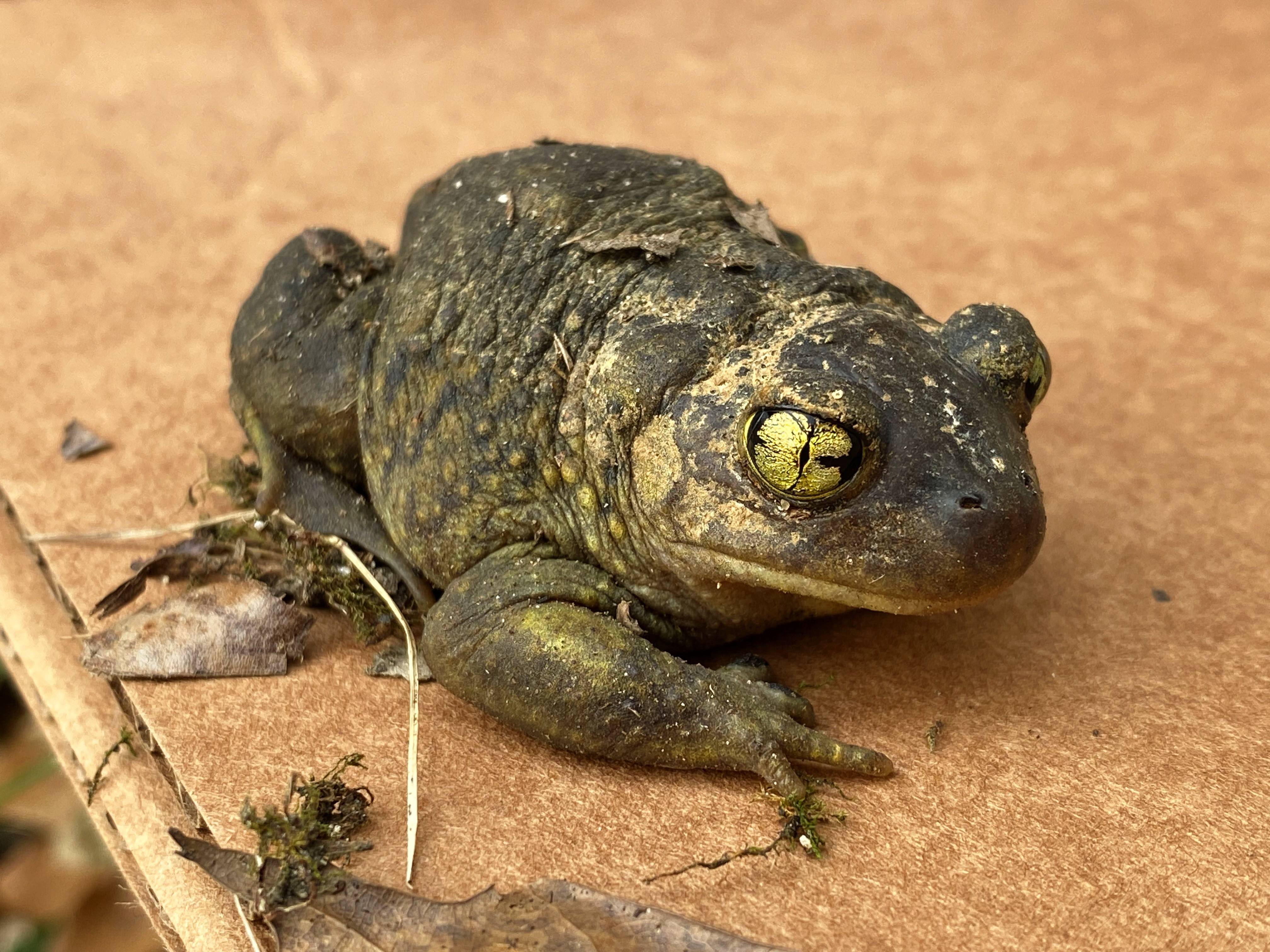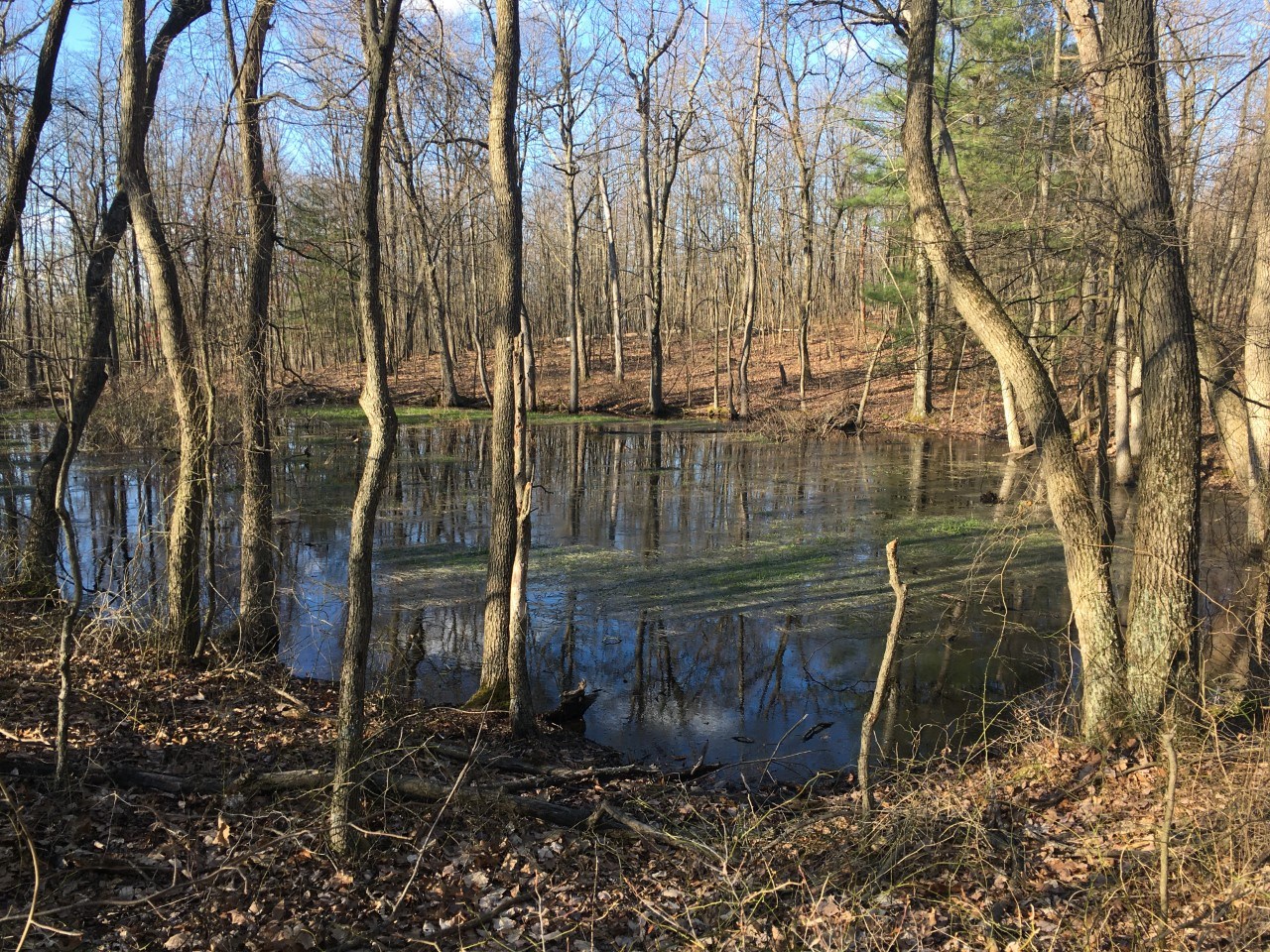By Dan Hale, ATC New England Natural Resource and Land Stewardship Manager
Vernal Pools: Temporary Habitats for A.T. Wildlife
May 18, 2020
This spring, the Appalachian Trail (A.T.) is coming to life with the sounds of the forest. On the first rainy night above 40° F, hundreds of spotted salamanders (about 6 inches long with tell–tale yellow spots) will come together from up to a half mile away to convene and mate. Wood frogs gather as well, making a rhythmic call that sounds like ducks quacking. All this activity convenes at vernal pools.
What are vernal pools?
Vernal pools, also called ephemeral or seasonal ponds, are relatively small, temporary, isolated water bodies that form in woodland depressions and low meadows when the snow melts and the spring rains come. Vernal pools provide breeding habitats for amphibians (frogs and salamanders), and macroinvertebrates (insects and crustaceans). These animals are free from fish predators here, since the pools will eventually dry up and are not connected to other bodies of water.

Wildlife like the Eastern Spadefoot Toad depend on vernal pools for development and survival. Photo by Marian Orlousky.
Why are vernal pools important?
Vernal pools are hotspots of life and biodiversity. Certain species, such as spotted, jefferson, and marbled salamanders, wood frogs, and fairy shrimp (small, hearty crustaceans), need vernal pools to complete their lifecycles. Although they spend most of their lives on dry land, these species would not be able to survive without mating, laying eggs and developing in vernal pools. For that reason, they are called “obligate” species, meaning they are required — or obligated — to use a vernal pool. Other species like spring peepers, snails, clams, spotted and Blanding’s turtles, dragonflies and caddisflies use vernal pools but can also survive in other wetlands. The animal life in vernal pools is also a food source for predators, including great blue herons, racoons and insects.
What threatens vernal pools?
Since vernal pools are isolated from larger wetlands and only fill with water for a short period of time, they are especially vulnerable to the effects of climate change. Shorter, warmer winters bring more rain and less snow, and therefore vernal pools will have less of a flood of snowmelt in the spring. Meanwhile, summers are becoming hotter, longer and drier, and trees are leafing out earlier, drawing down water levels through evapotranspiration. Vernal pools may go dry before amphibians can reproduce. With drier conditions, there will be fewer viable vernal pools and those remaining will be farther apart, causing populations of obligate species to become disconnected.
Besides climate change, vernal pools are also threatened by human activities such as logging, construction, and pollution. Logging equipment can create ruts in the ground that disrupt or drain vernal pools. When wetlands are delineated on new building development sites, vernal pools are often overlooked because they are dry many months of the year. Finally, frogs and salamanders breathe through their skin, so they are especially vulnerable to air pollutants such as mercury.

What can we do about it?
Many states have vernal pool certification programs that specifically protect vernal pools. Individuals can document the presence of a vernal pool and submit it to their state’s environmental agency for certification and protection.
One ongoing study by the Northeast Climate Adaptation Science Center (NECASC) is mapping and monitoring climate change refugia for vernal pools from Virginia to Maine. This study is using climate change modeling to identify which vernal pools will be resistant to climate change in order to help identify priorities for conservation.
The land conserved for the A.T. not only protects many vernal pools, but it also provides a connected land–base for species to shift their ranges in response to climate change. By supporting the ATC and our land protection efforts, you are helping to take care of frogs, salamanders and other animals that make vernal pools along the A.T. their home.
Discover More

Stay Safe and Healthy
Responding to COVID-19
Learn how ATC is working to help mitigate the spread of COVID-19 on the Appalachian Trail.

Appalachian Trail Conservancy
Our Work
Learn more about the Appalachian Trail Conservancy and the many roles it has in maintaining and protecting the Appalachian Trail.

ATC's Official Blog
A.T. Footpath
Learn more about ATC's work and the community of dreamers and doers protecting and celebrating the Appalachian Trail.
